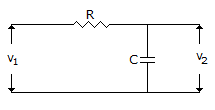Discussion
Home ‣ Electronics and Communication Engineering ‣ Microwave Communication See What Others Are Saying!
- Question
Assertion (A): The phenomenon of differential mobility is called transferred electron effect.
Reason (R): GaAs exhibits transferred electron effect.
Options- A. Both A and R are correct and R is correct explanation of A
- B. Both A and R are correct but R is not correct explanation of A
- C. A is correct but R is wrong
- D. A is wrong but R is correct
- Correct Answer
- Both A and R are correct but R is not correct explanation of A
ExplanationA Gunn diode uses GaAs which has a negative differential mobility, i.e., a decrease in carrier velocity with increase in electric field.This effects is called transferred electron effect. The impedance of a Gunn diode is tens of ohms.
A Gunn diode oscillator has a resonant cavity, an arrangement to couple Gunn diode to cavity, biasing arrangement for Gunn diode and arrangement to couple RF power to load.
Applications of Gunn diode oscillator include continuous wave radar, pulsed radar and microwave receivers.
More questions
- 1. The most important primary force of attraction in the formation of solids is
Options- A. electromagnetic
- B. electrostatic
- C. quantum-electrostatic
- D. quantum electromagnetic Discuss
Correct Answer: electrostatic
- 2. In a stop-and-wait ARQ system, the transmitting terminal
Options- A. waits for positive or negative acknowled-gement from the receiving terminal after sending a block
- B. sends another block if positive acknowledge is received through ACK character
- C. resends the previous block if negative acknowledgement is received through a NAK character
- D. does not wait for acknowledgement after sending a block Discuss
Correct Answer: does not wait for acknowledgement after sending a block
- 3. In a bipolar transistor the barrier potential
Options- A. 0
- B. a total of 0.7 V
- C. 0.7 V across each depletion layer
- D. 0.35 V Discuss
Correct Answer: 0.7 V across each depletion layer
Explanation:
Since there are two p-n junctions, there are two depletion layers and 0.7 V across each layer.- 4. Induction heating systems require low frequency inverters.
Options- A. True
- B. False Discuss
Correct Answer: False
Explanation:
It uses high frequency inverter.- 5. An electron for which l = 0 has zero orbital magnetic dipole moment.
Options- A. True
- B. False Discuss
Correct Answer: True
- 6. A single phase full converter can operate in
Options- A. 4 quadrants
- B. 3 quadrants
- C. 2 quadrants
- D. 1 quadrant Discuss
Correct Answer: 2 quadrants
- 7. For the circuit in the given figure, V2(s)/V1(s) =

Options- A.

- B.

- C.

- D.
 Discuss
Discuss
Correct Answer:
Explanation:
 .
.
- 8. A single phase step up cycloconverter changes 50 Hz to 100 Hz. Then one half wave of input will give rise to
Options- A. one half wave of output
- B. one full wave of output
- C. two full waves of output
- D. either (b) or (c) Discuss
Correct Answer: one full wave of output
Explanation:
Since output frequency is 2f, one half wave of input must equal one full wave of output.- 9. Which of the following is true about an impulse voltage?
Options- A. It is a unidirectional voltage
- B. Chopped impulse flashover does not occur
- C. Time taken to rise is equal to time taken to fall
- D. RMS value is always less than 50% of average value Discuss
Correct Answer: It is a unidirectional voltage
Explanation:
Impulse is unidirectional (either positive or negative).- 10. 8085 has 6 sign flags.
Options- A. True
- B. False Discuss
Correct Answer: False
Explanation:
It has one sign flag S.
Comments
There are no comments.
More in Electronics and Communication Engineering:
Programming
Copyright ©CuriousTab. All rights reserved.
